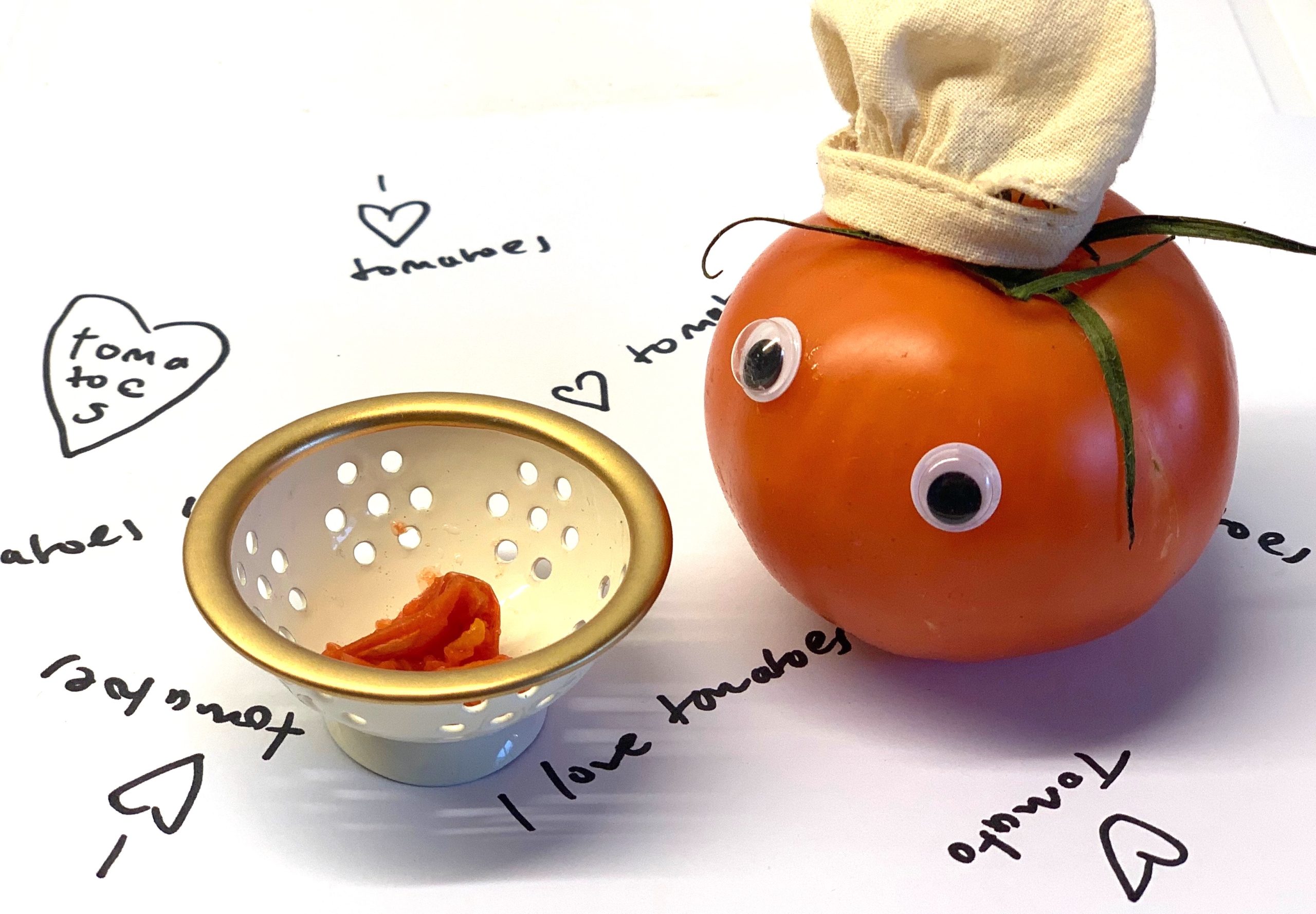What Actually Are Tomatoes?!
The History Of Tomatoes
Tomatoes originated from South America, possibly the Andes Mountains of Peru and Ecuador, and its name is derived from the Aztec word tomatl. Tomatoes were regarded as poisonous for a long time, in fact, the tomatoes Latin botanical name is Lycopersicon esculentum which translates to ‘wolf peach’. Peach because they’re round and wolf because they were thought of as deadly. It wasn’t widely eaten in the UK until the 18th century for this reason, although they were brought to Europe and grown as ornaments in Spain from the 16th century.
It’s thought that the first variety of tomatoes in Europe were actually the size of blueberries and yellow in colour as they were known in Italy and Spain as pomodoro / pomi d’oro which means golden apples.
Checking The Quality Of Tomatoes
You can judge the quality of a tomato by its colour and how it feels. When ripe, all tomatoes should be firm and wrinkle-free, but slightly soft to touch. Green tomatoes, however, should be extra-firm as essentially they are just under ripe tomatoes.
Colour is harder to judge as tomatoes can be a variety of shades. Green tomatoes should be a fully uniform light green colour, if they have an orange tint they have already started to ripen so will be unsuitable for dishes like fried green tomato. Many of the typically red varieties such as beef, plum and cherry should be vibrant, smooth and shiny with no blemishes. Whereas, heirloom tomatoes are more likely to be a range of red, yellow, orange and green, so it’s best to use firmness to test quality.
How Should Tomatoes Be Stored?
How To Prepare Tomatoes
Tomato preparation is pretty simple, just remove the stem and wash, simples! Then you can prepare as needed: leave whole, halve or quarter, slice, chop or dice them to fit your dish.
To make into a sauce you may want to remove the skin, so cut out the green stalk and tough core at the top of the tomato and score a small ‘X’ at the base. After placing in boiling water, removing and allowing to stand for around 30 seconds, the skin should loosen and where scored with a cross, it should be easy to peel the skin off.
Nutritional Benefits Of Tomatoes
Tomatoes have many nutritional benefits as they’re packed full of vitamins, especially A and C, which help keep your teeth, bones and skin healthy and boost your immune system. As a great source of carotenoids and flavonoids, both of which have antioxidant properties, tomatoes can help regulate cellular activity and help fight off free radicals that may harm the body. Specifically, they’re high in the carotenoid lycopene which can aid in reducing the risk of cancer, heart disease and other chronic illnesses.
Are cooked or raw tomatoes better for you?
You’d think it wouldn’t make a difference, but cooking tomatoes can actually reduce the contents of vitamin C and flavonoids. However, it can boost levels of lycopene which can help reduce the risk of cancer, so its swings and roundabouts!
Seasonality Of Tomatoes
Tomato can be grown all year round. Prime season in the UK is May to early October. In Europe tomatoes are often grown in Holland, Spain and Italy, not only because they are a regular component of their cuisines, but because they have the warm temperatures and sunlight needed for growth.
How Do Tomatoes Grow?
Tomatoes grow on vines and can be grown indoors in greenhouses or outdoors when the weather is appropriate. They need sun for photosynthesis and warmth to be able to grow to the best of their ability and require plenty of room to grow as some varieties can sprawl up to 20 feet tall, so staking the plant is essential to stop it collapsing. One vine can harbour many fruits so it can get pretty heavy!
You may hear the term determinate tomatoes, these are bush tomato plants, while indeterminate tomato plants are vining types. Now don’t get confused as all tomatoes grow on vines, however, determinate tomato plants generally grow to heights of around three or four feet tall, so look more like a bush. Whereas, indeterminate or vining tomato plants are those that grow much taller, it really just depends on the different varieties.
Where Are Our Tomatoes From?
We buy fantastic heirloom tomatoes from Westlands in Evesham during the summer months. You can find out more about the suppliers we work with here.
During the winter when the UK tomato season finished we import tomatoes from the Mediterranean.
Types Of Tomatoes
Heirloom / Heritage Tomatoes
Cherry Tomato
Plum Tomato
Inca Tomatoes
Beef Tomatoes
Our Tomatoes
We stock all sorts of tomatoes for all uses! Here you can find some of the varieties of tomatoes we stock, when available. Please contact our team to discuss your requirements, or login to our online ordering or app to place your order for tomatoes.
Tomato Recipes
Here’s some delicious recipe inspiration for your menus featuring tomatoes.
Burrata, Wild Garlic, Baby Leeks, Toasted Hazelnuts & Heritage Tomatoes
Heritage Tomato Salad Topped Sourdough – Whipped Goats Cheese And Pickled Pink Onions
Pan Fried Mackerel Fillets, BLT Salad – Heritage Tomato, Little Gem, Smoked Bacon Lardons, Herb Mayo Dressing
Join Our Mailing List
By signing up to Oliver Kay e-mails, you confirm that you’re aware your personal data will be used in line with our Terms and Conditions and our Privacy Policy.


